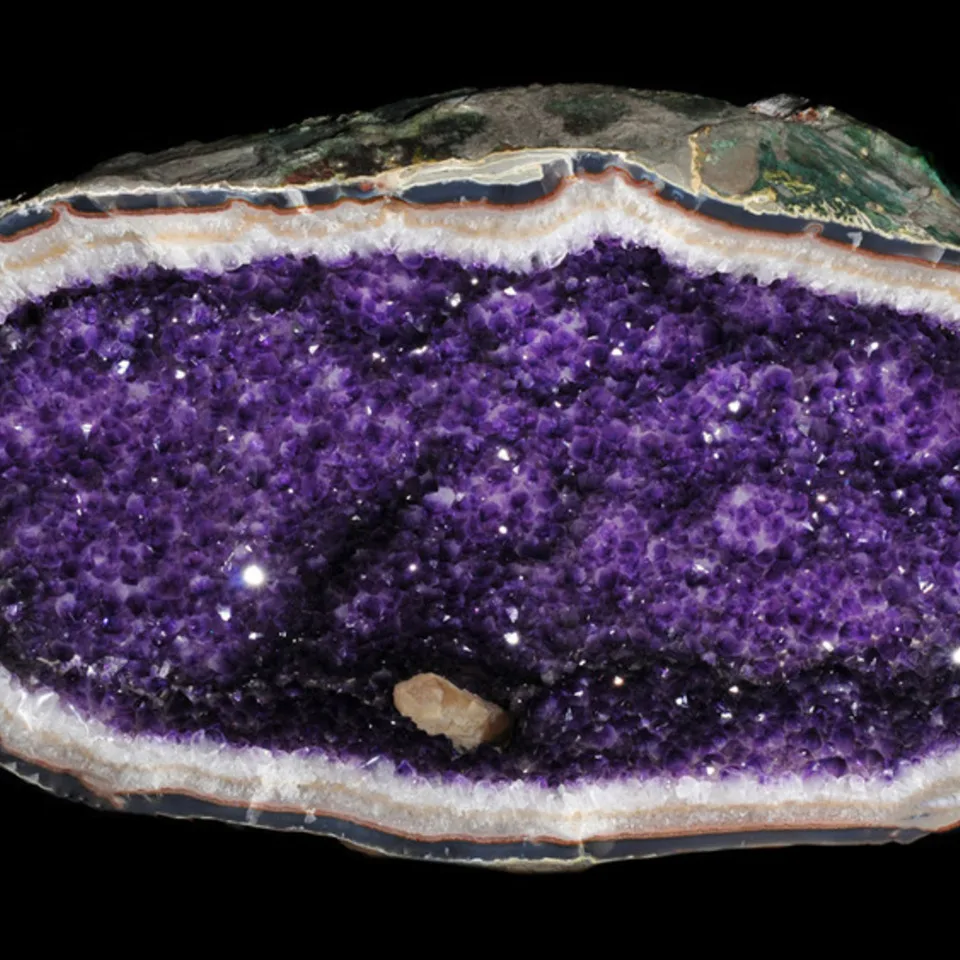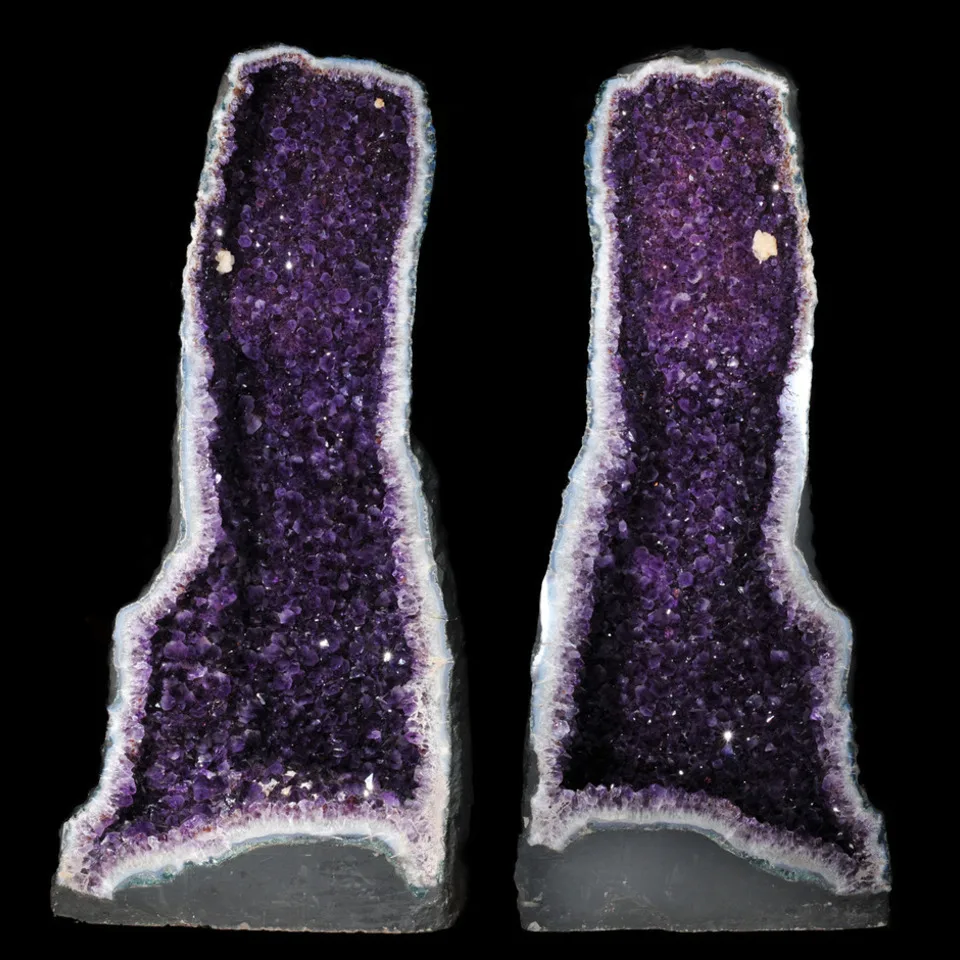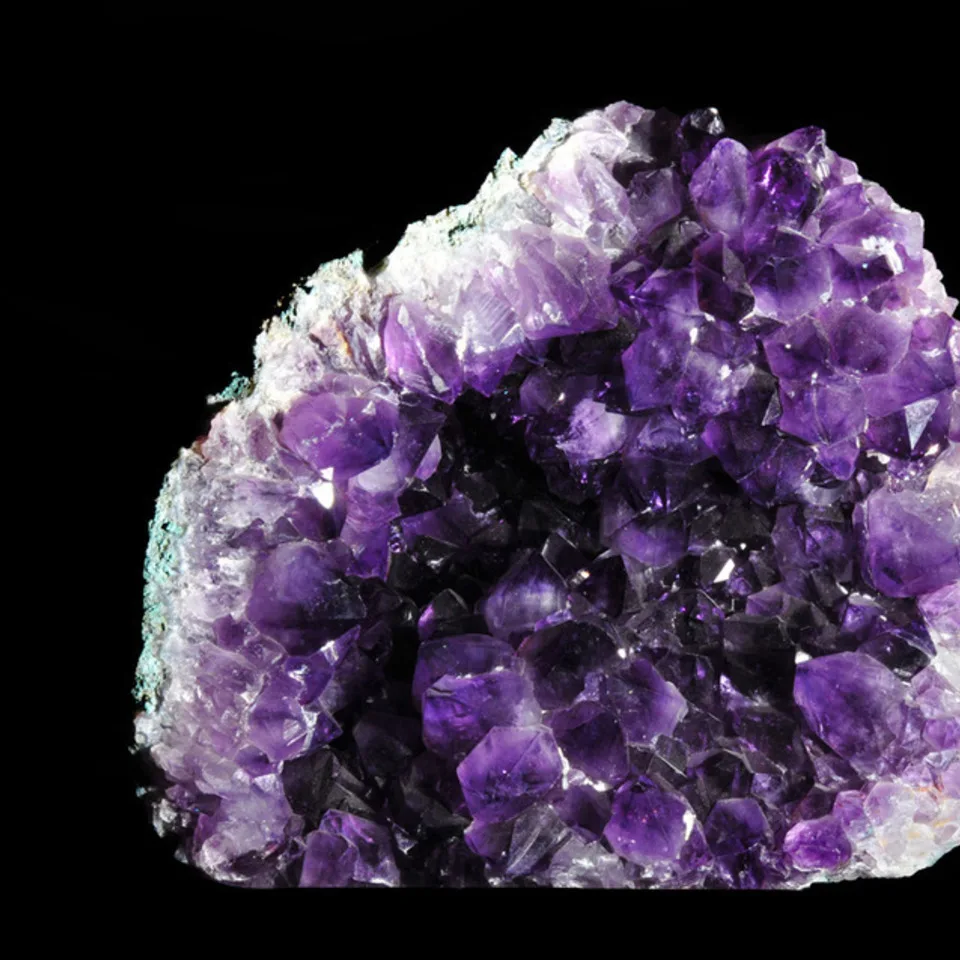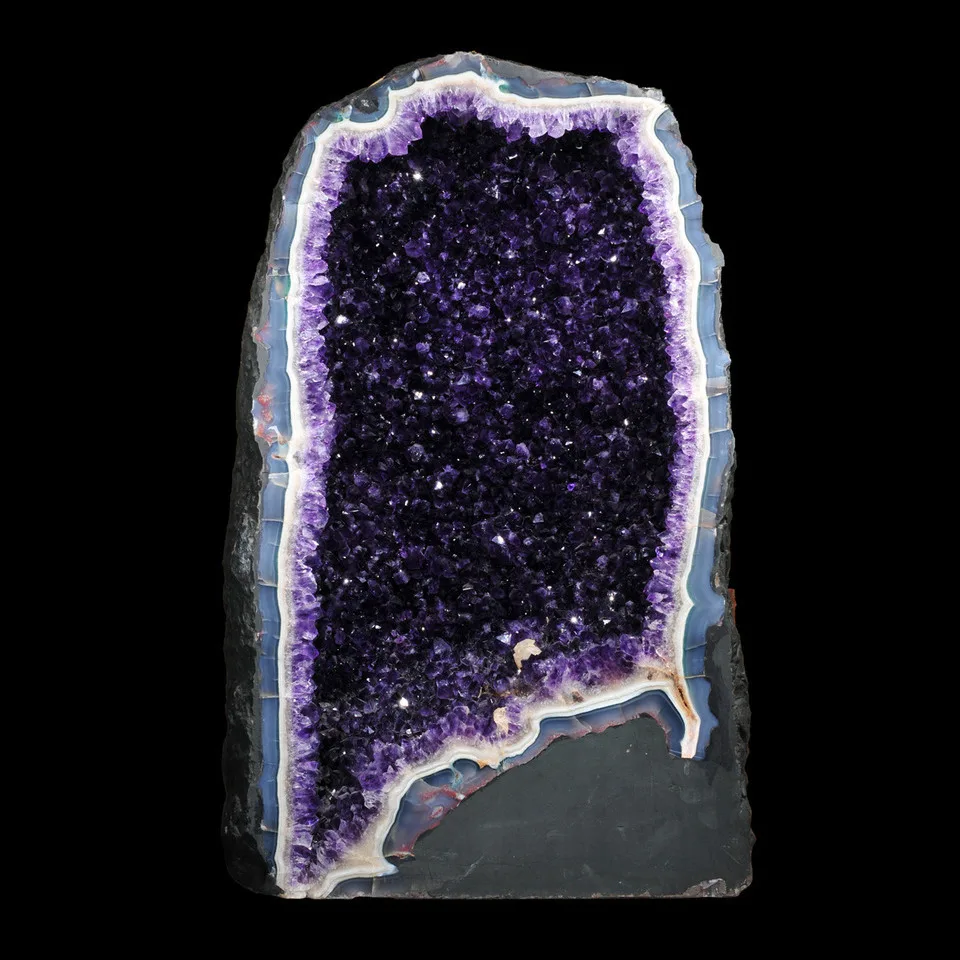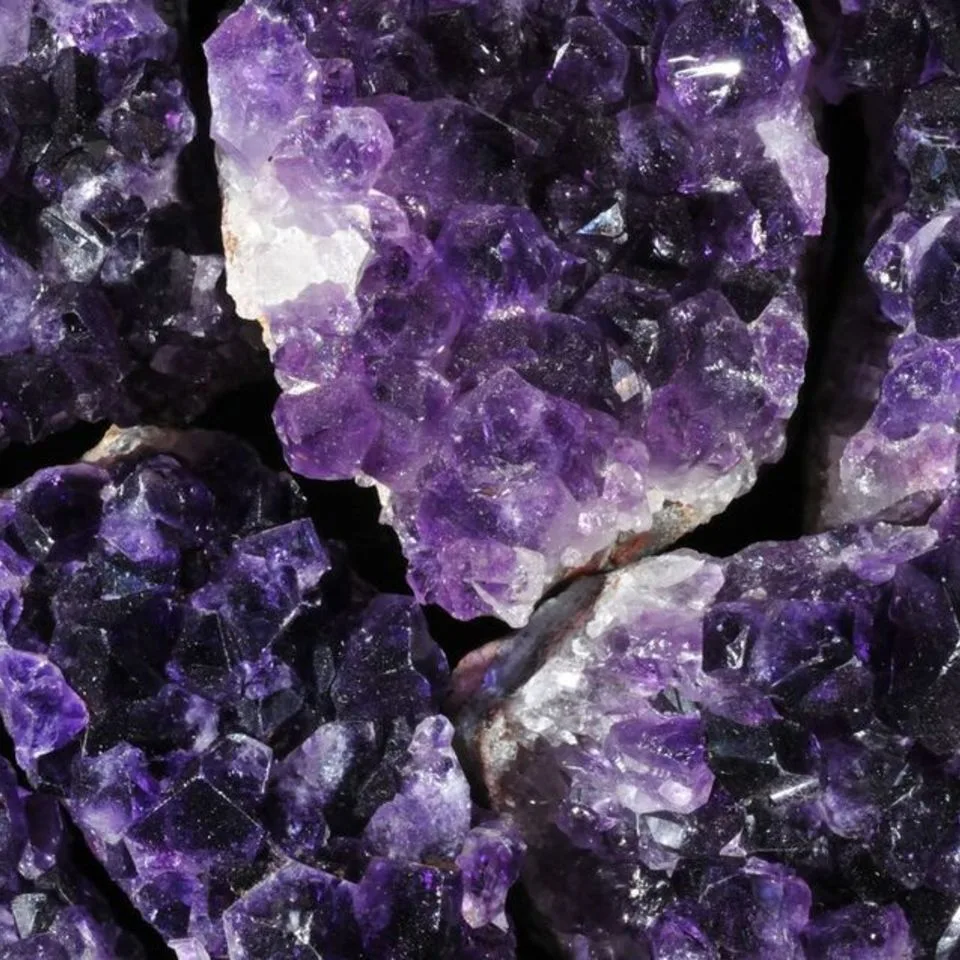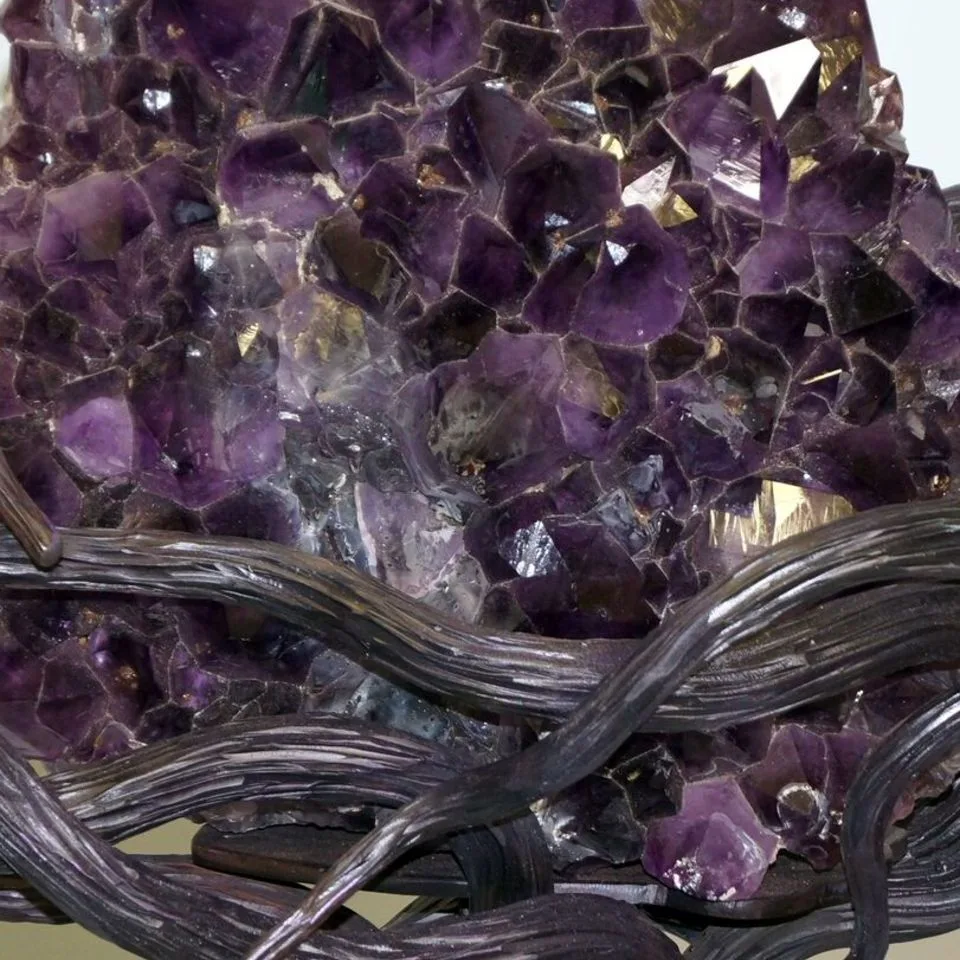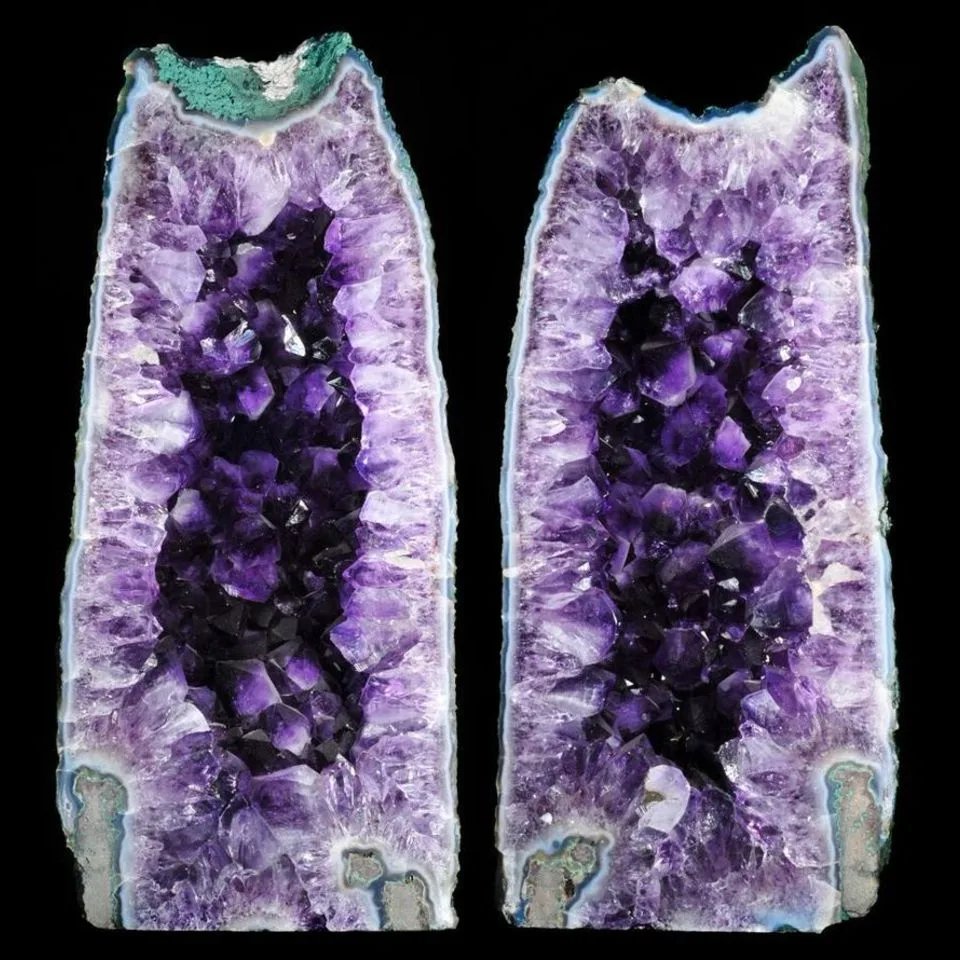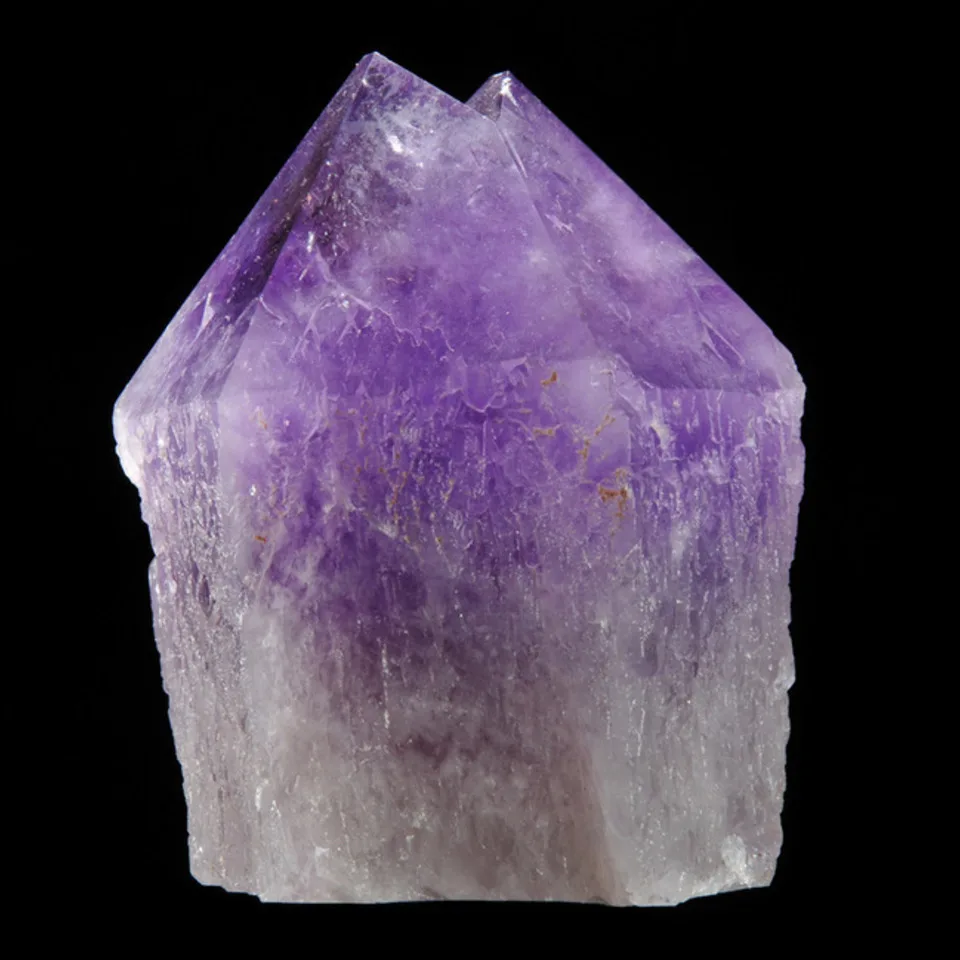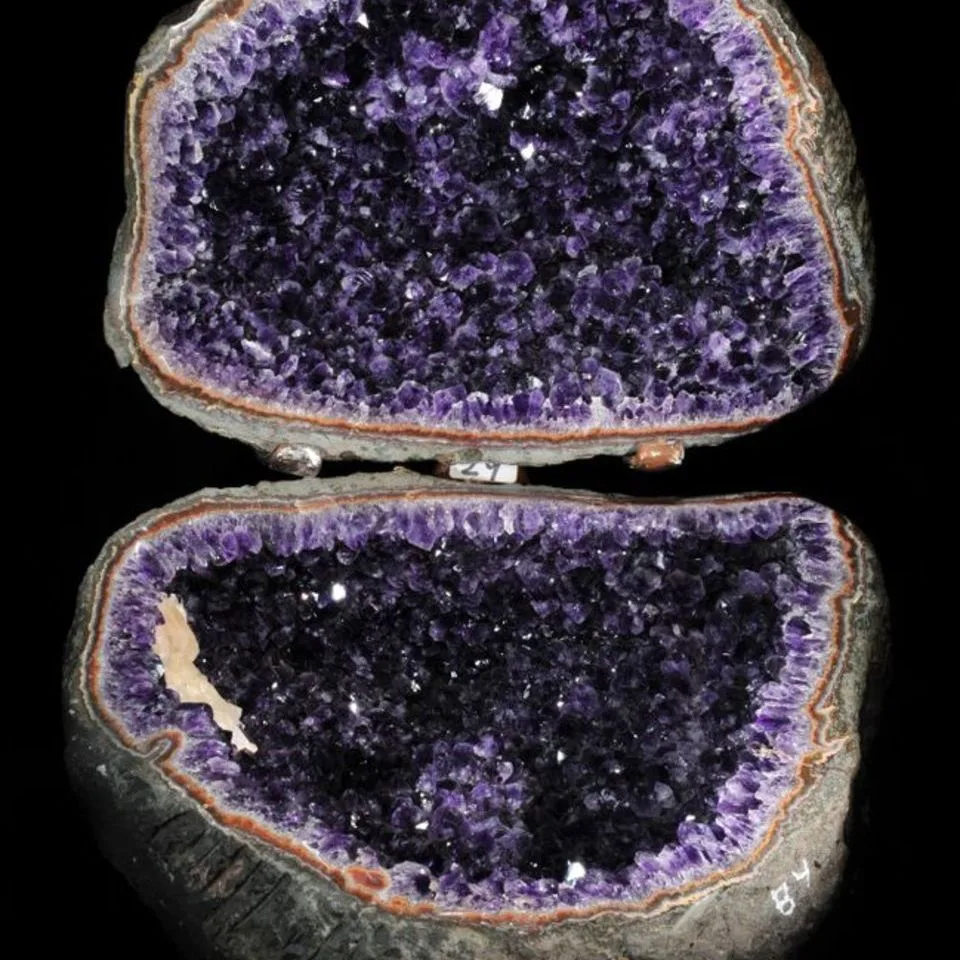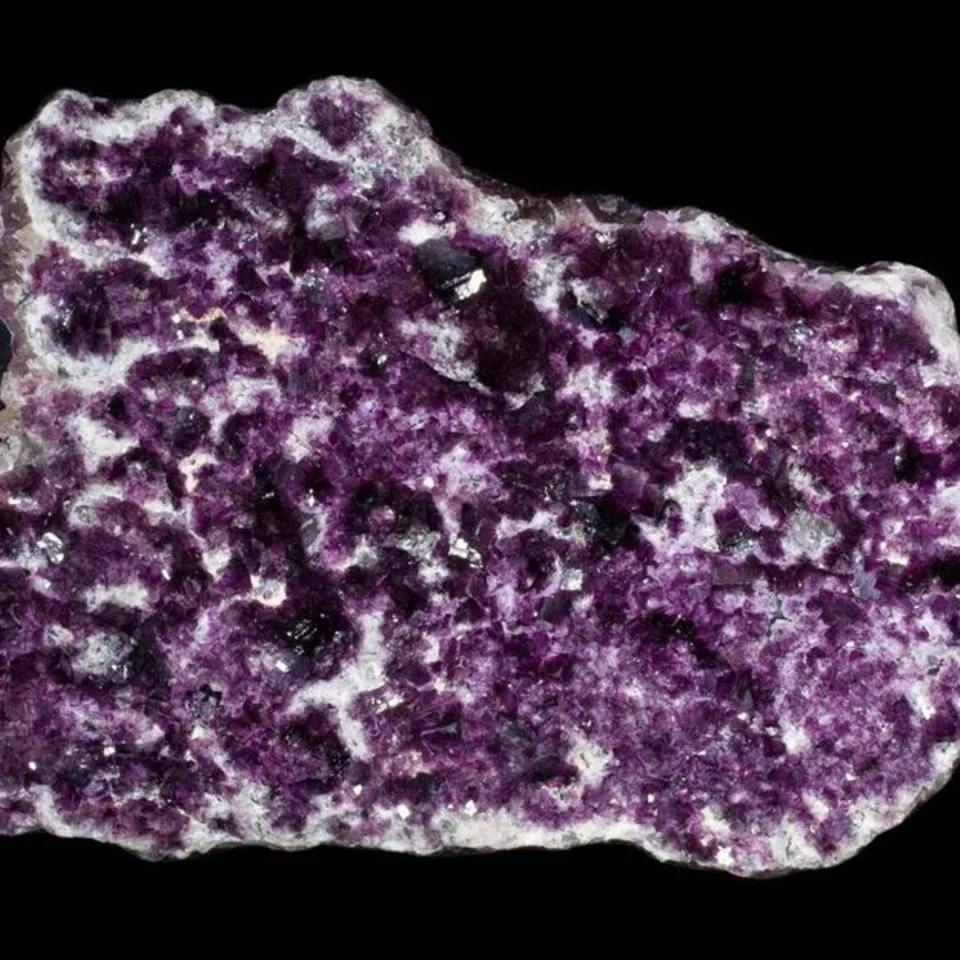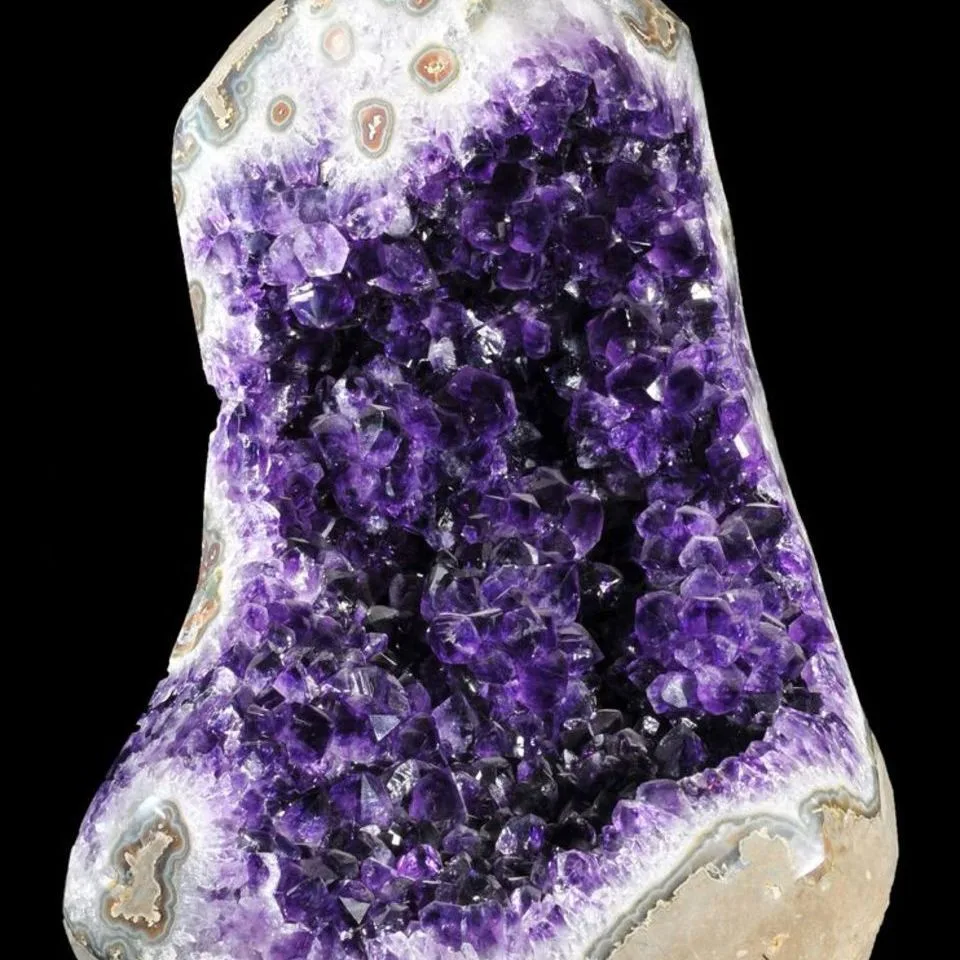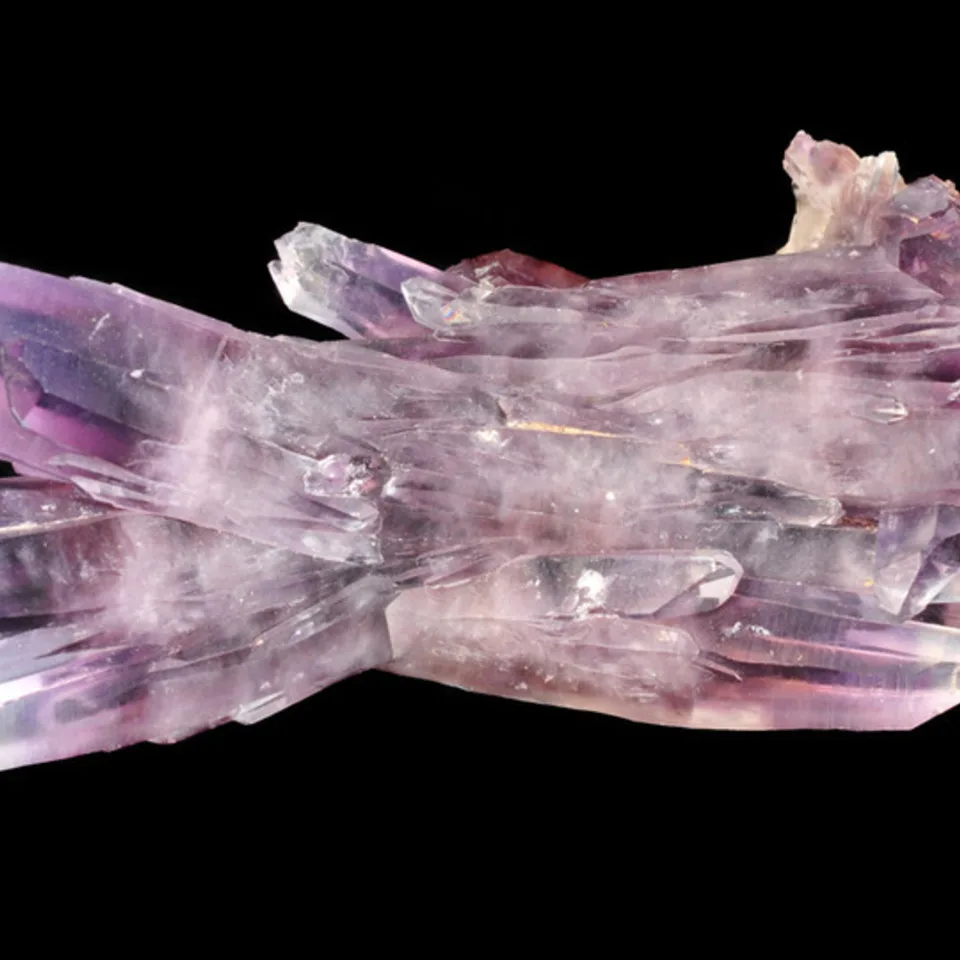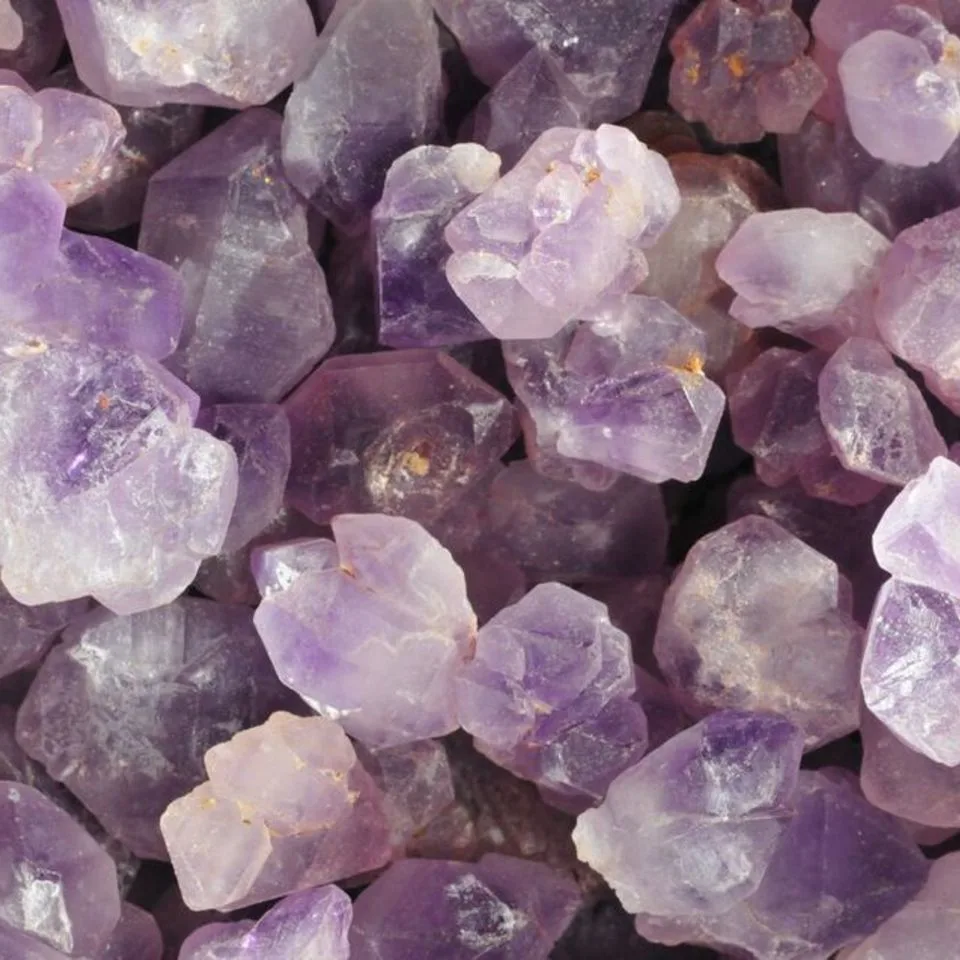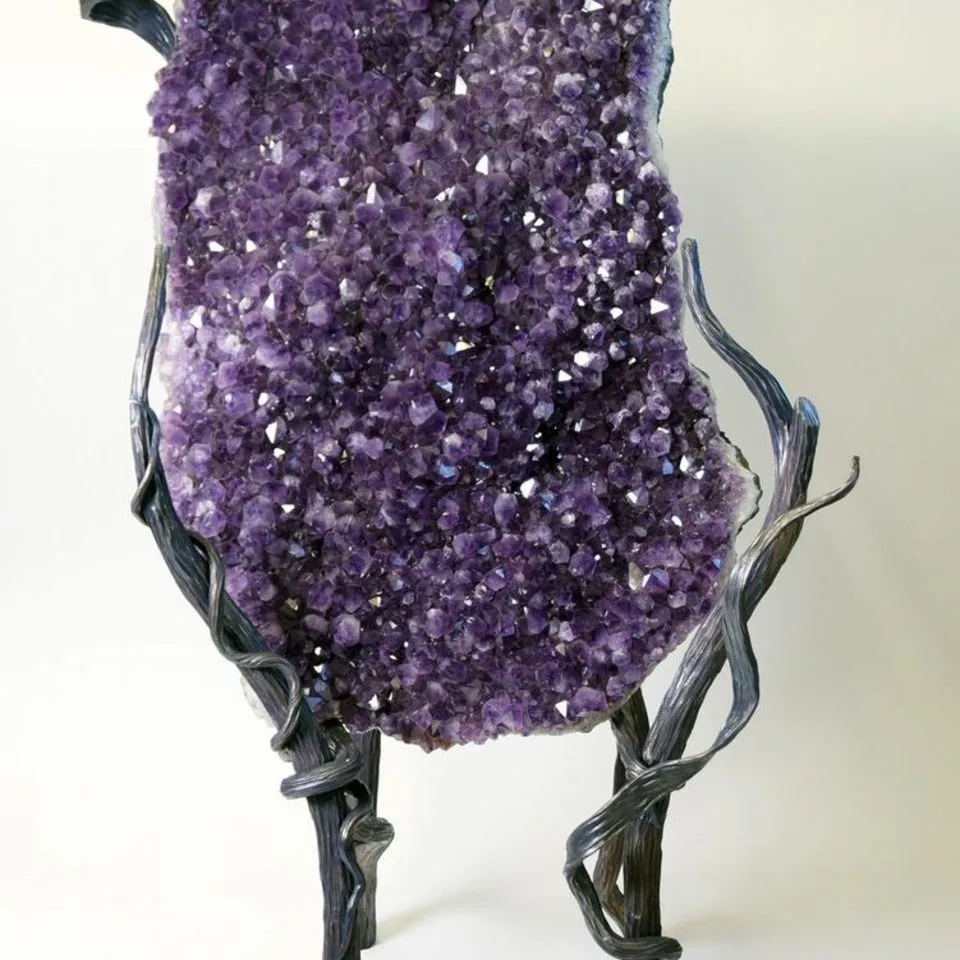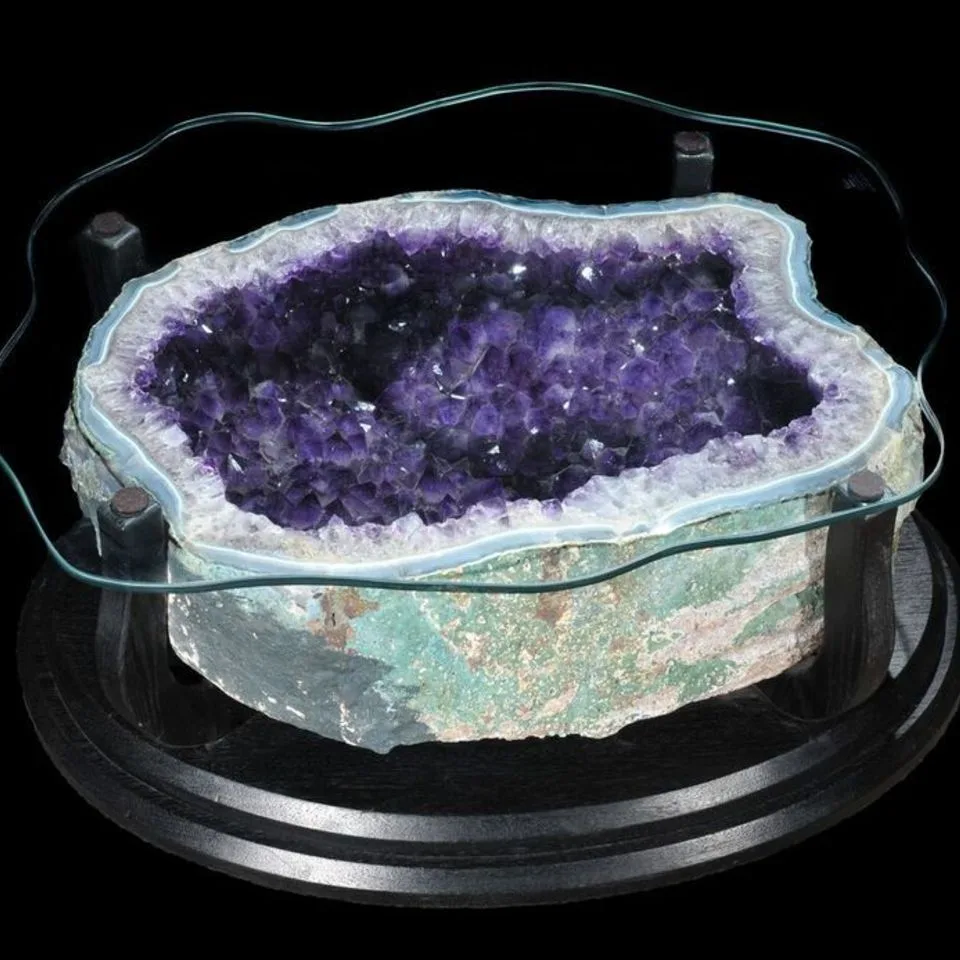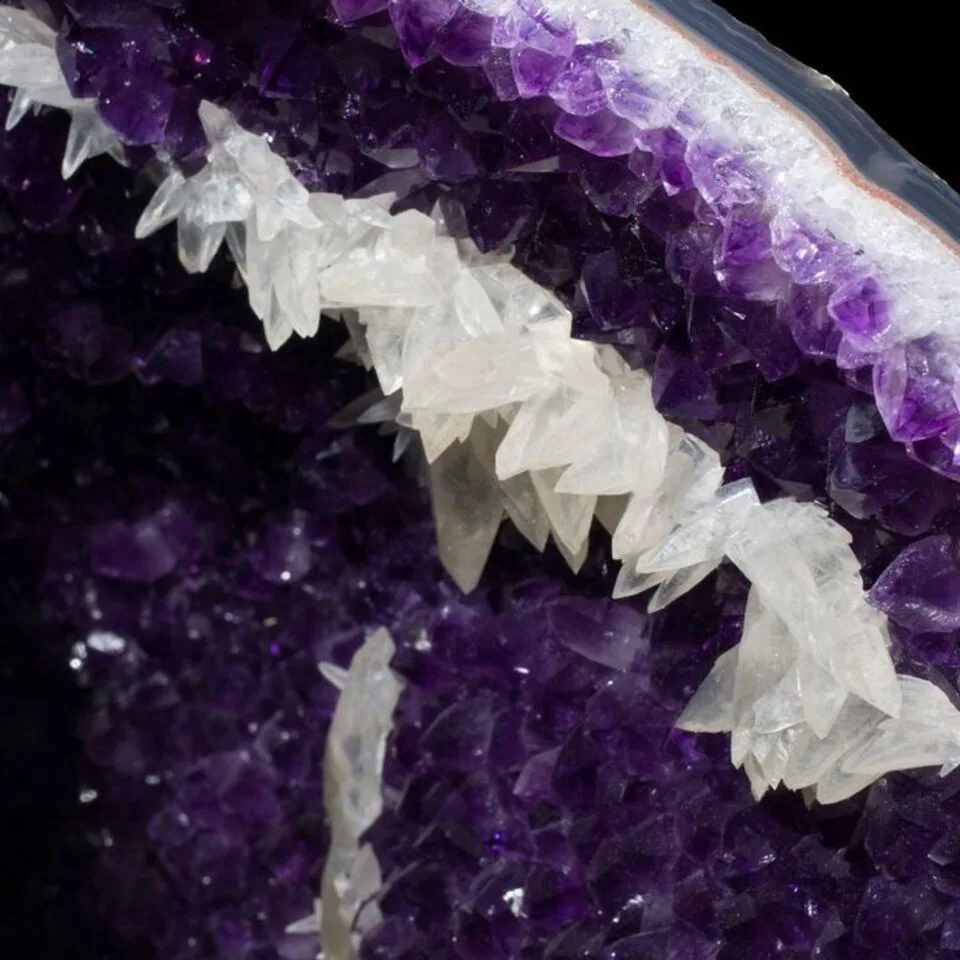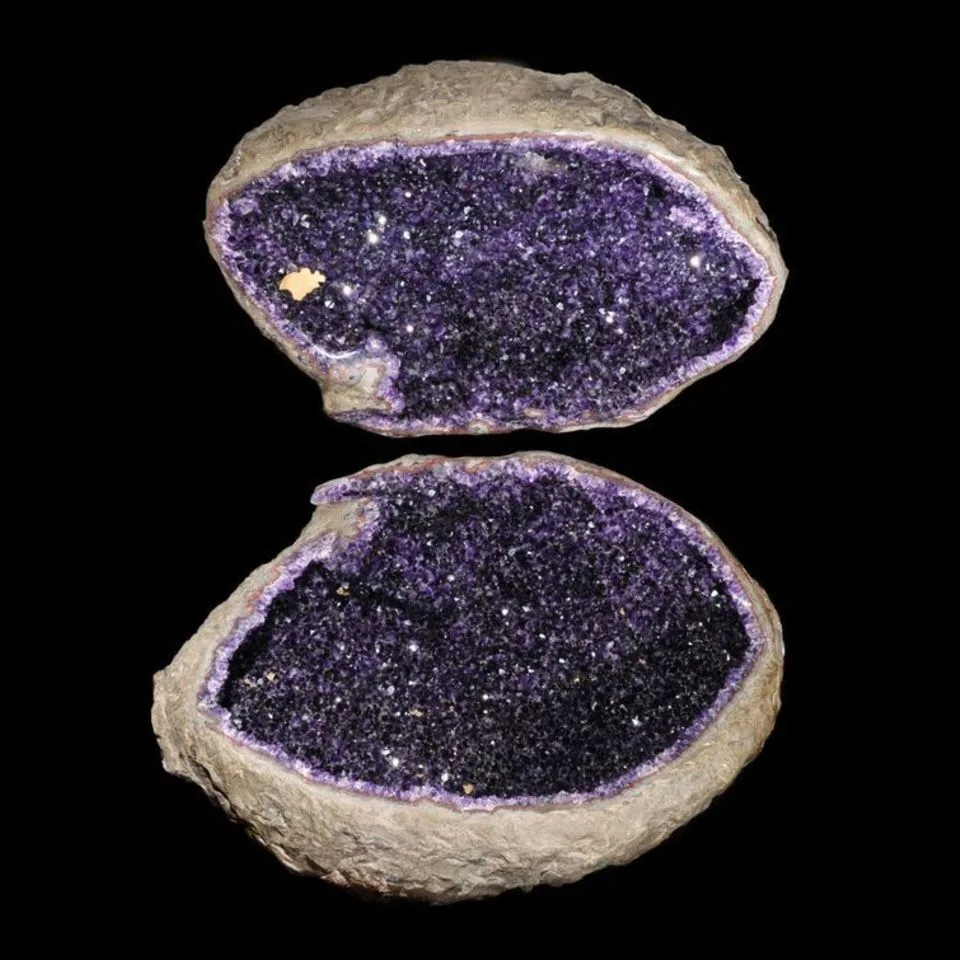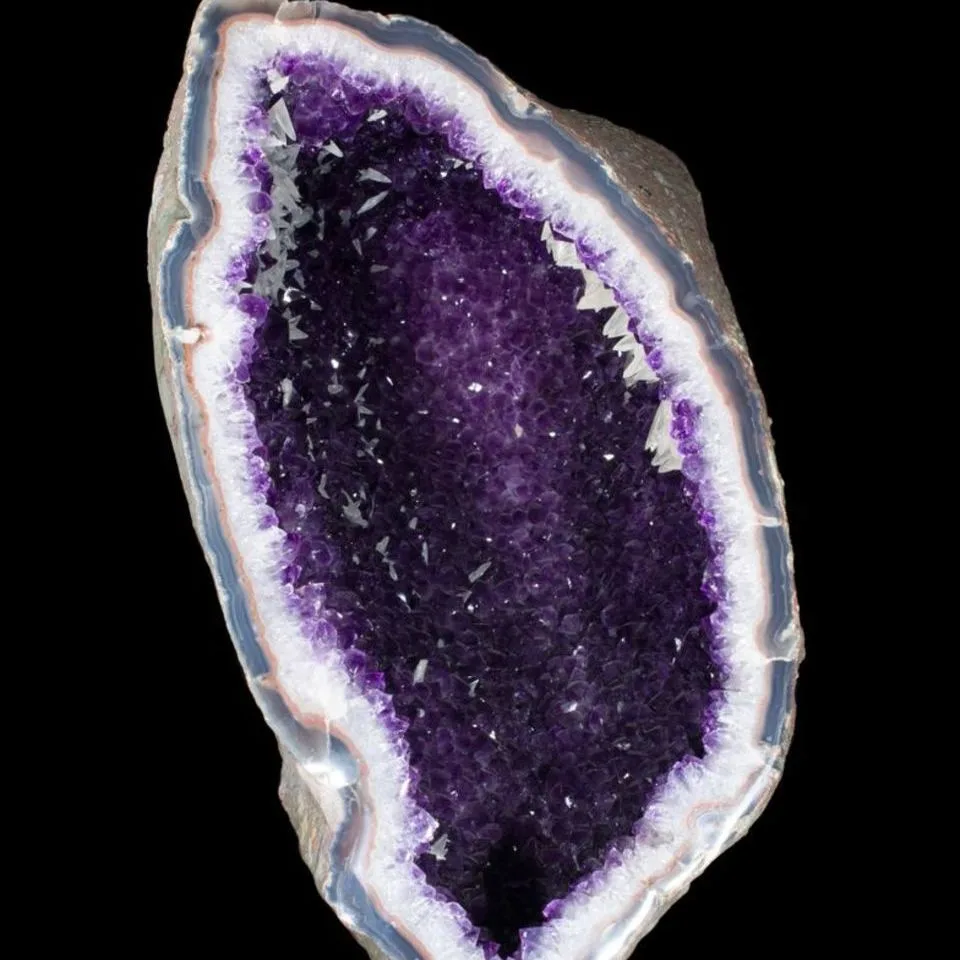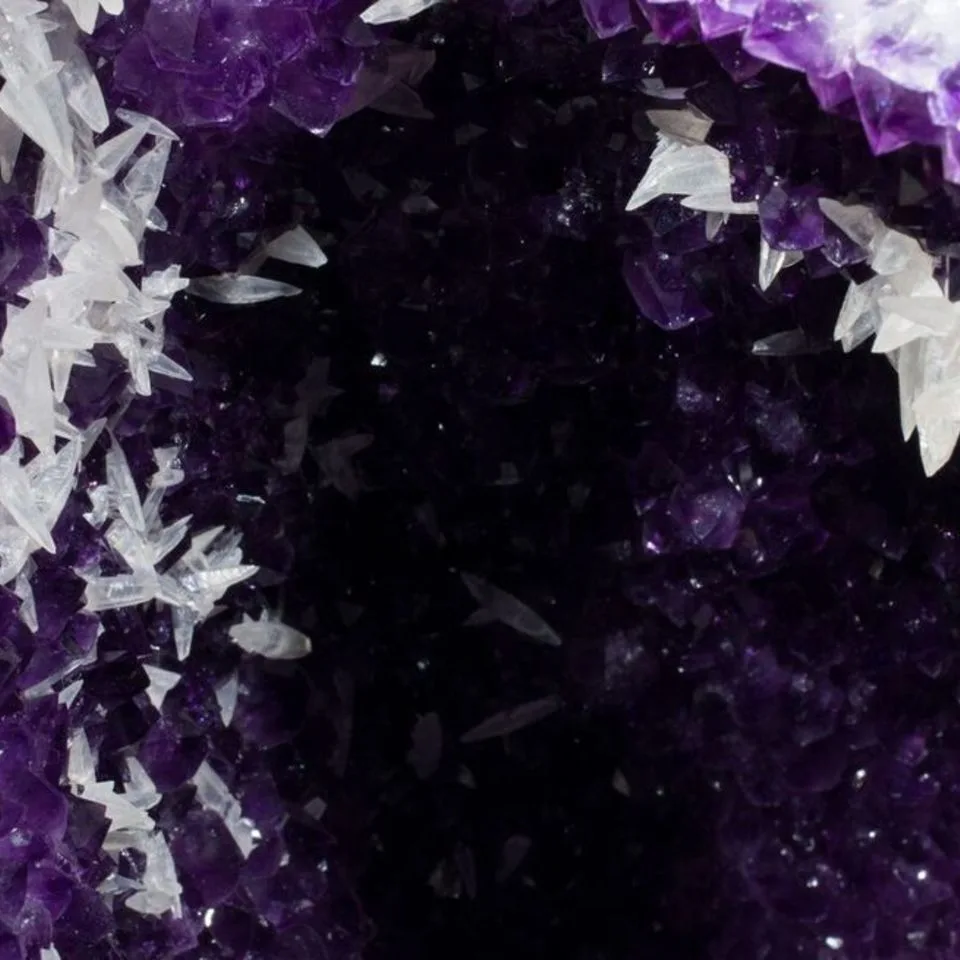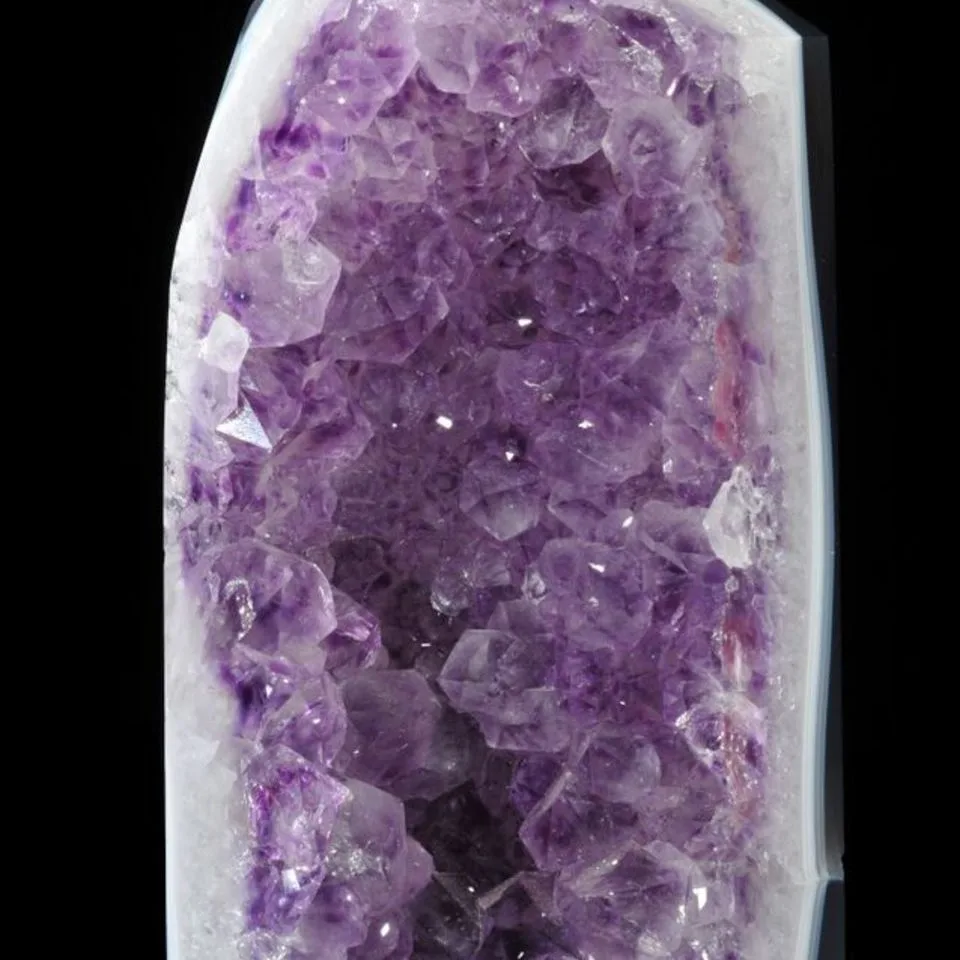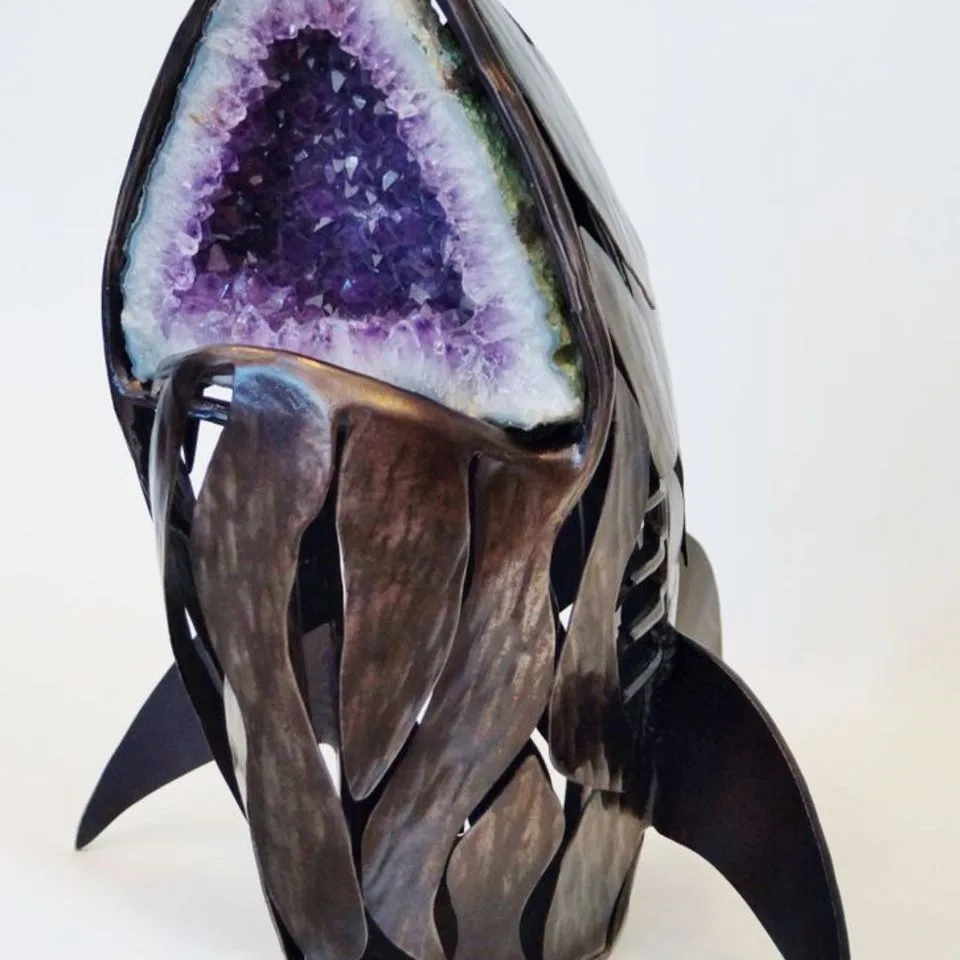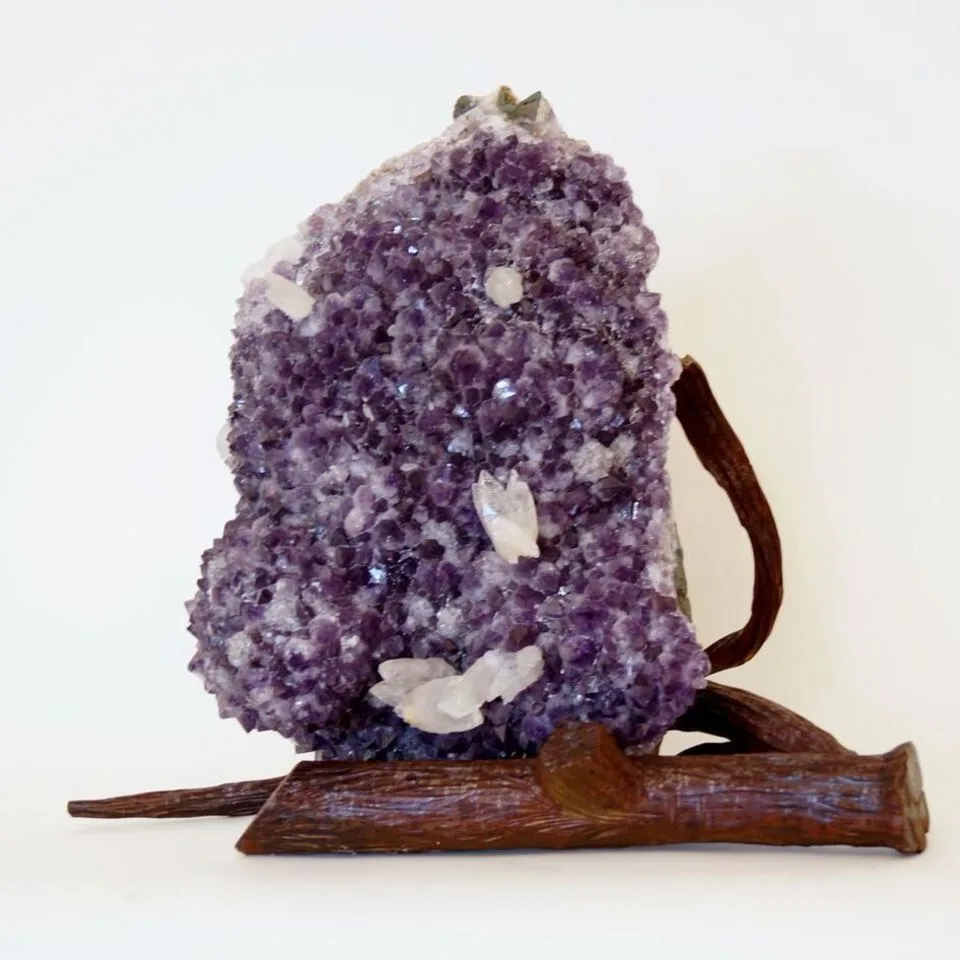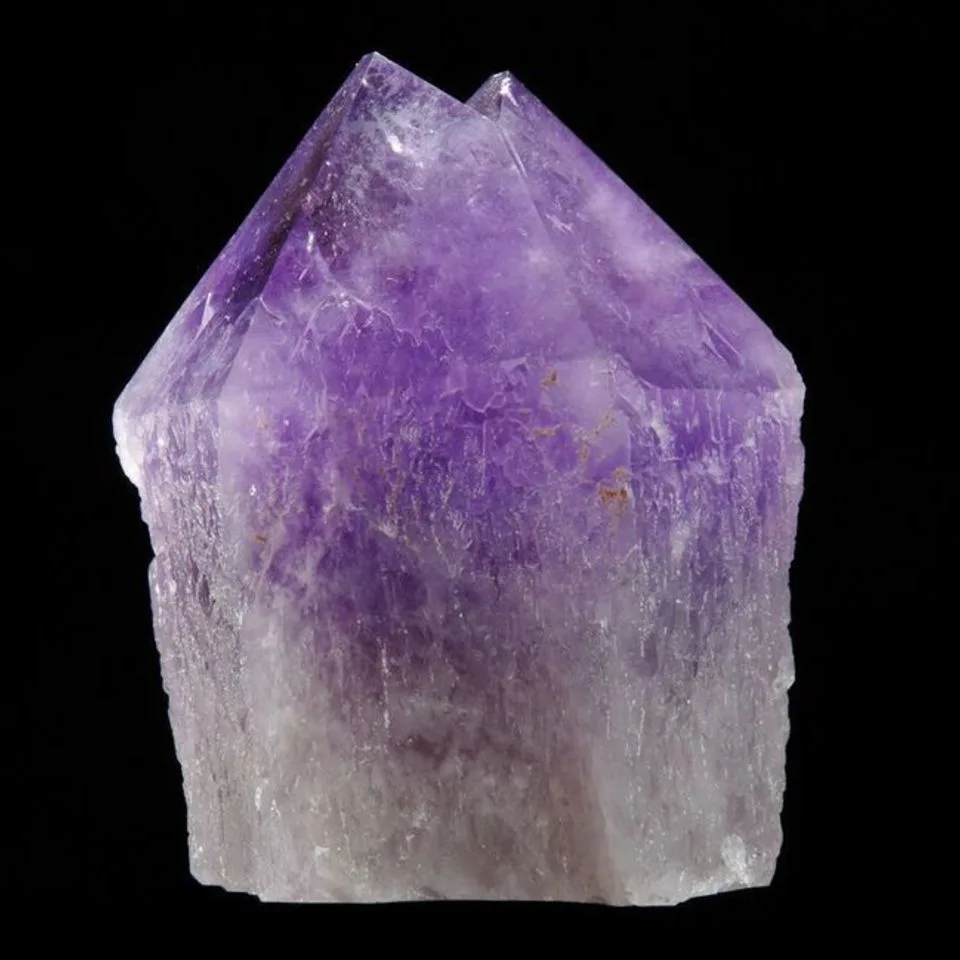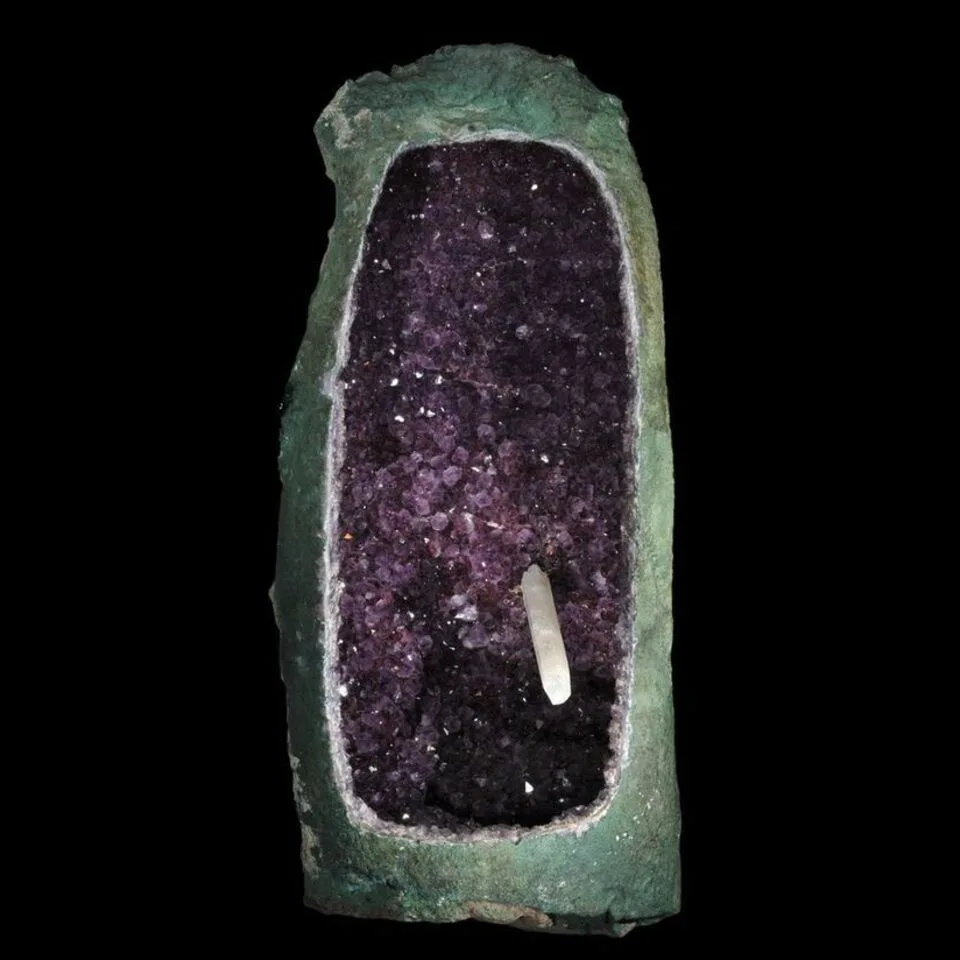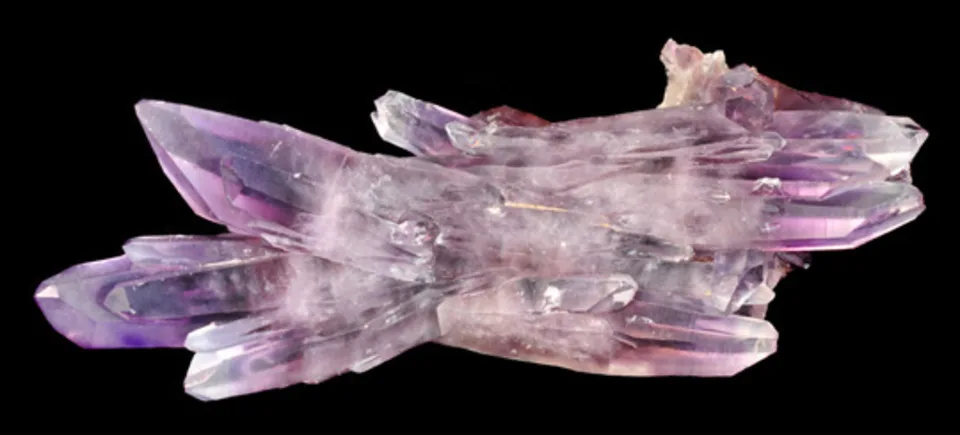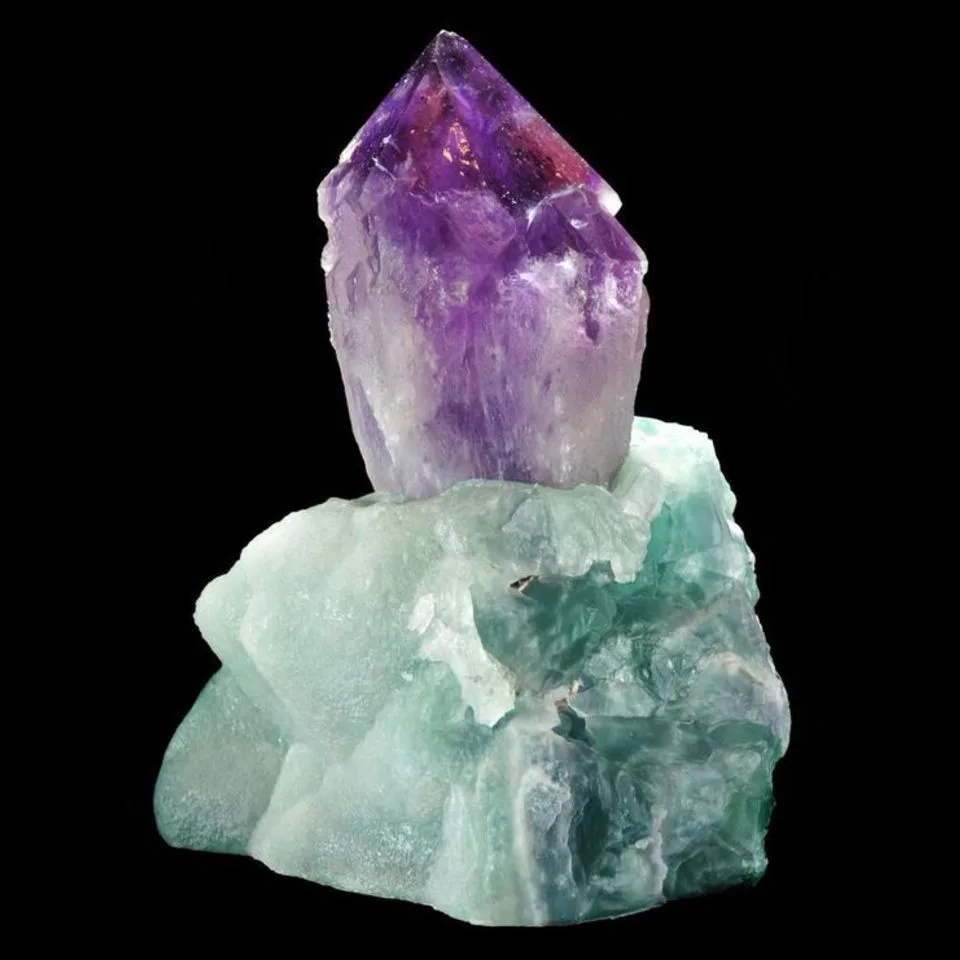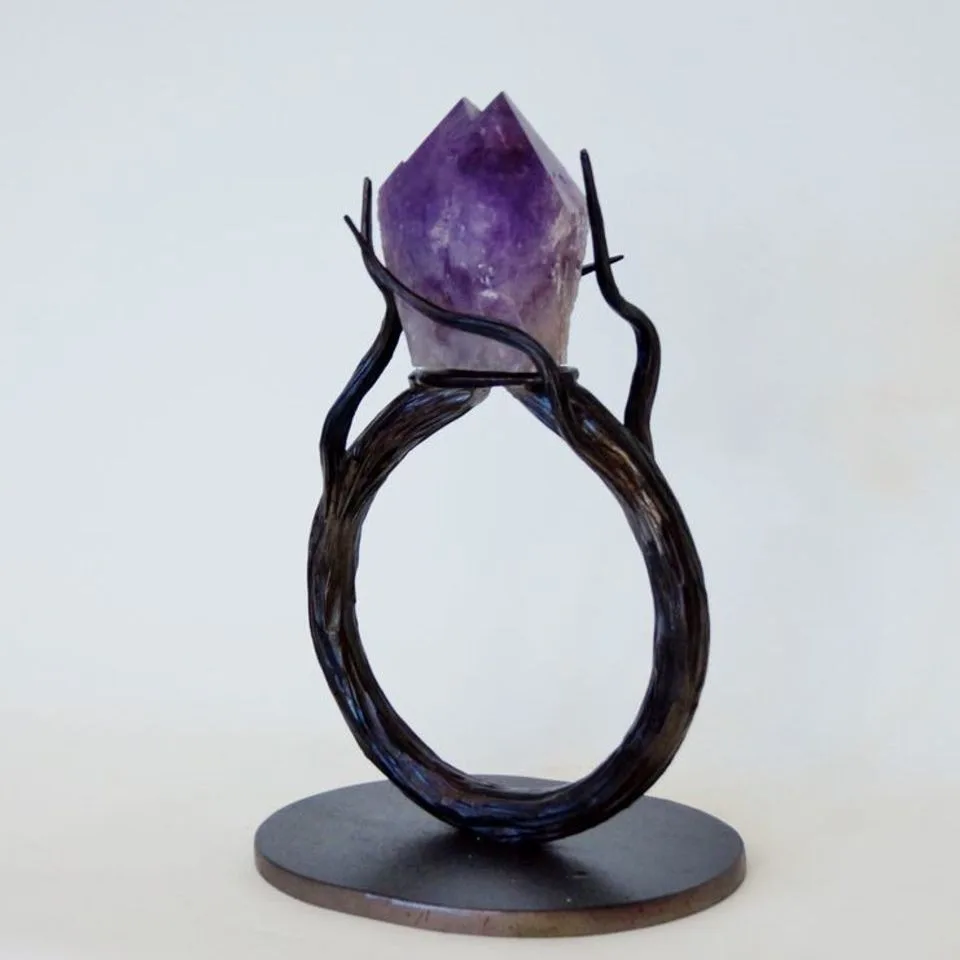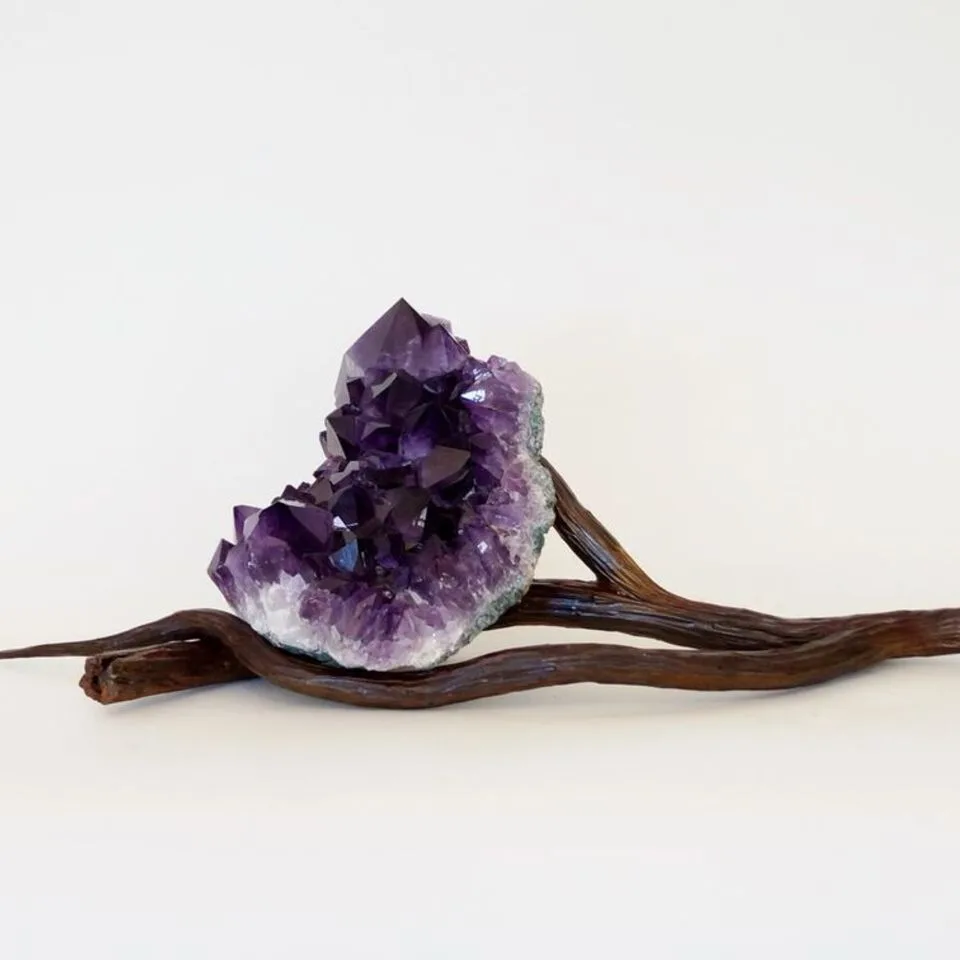Amethyst
Amethyst is a beautiful stone that is in the quartz family. Amethyst is the most precious quartz mineral and comes in a few distinct colors including violet, purple, rose, lavender and mauve. When it comes to value, the most valuable color is that of a deep purple with tinges of violet. There are many gemstones that are similar in consistency to Amethyst, one of them is Citrine. Citrine is Amethyst that is heated; it turns yellow orange in color.
Amethyst is a relatively hard substance. It is rated a 7 on the Moh’s scale which means it is a great stone to make ornamental jewelry out of. However, it should be noted that Amethyst can fracture when hit with too much force, even though it has a rating of 7 on Moh’s scales it is still 1/15 the hardness of a diamond. Amethyst can come in many sizes and while jewelry grade, Amethyst is very rare, other types of Amethyst can be meters long. Yes, meters long. For instance, Amethyst was founded in Mexico in 1900; it measured 33 feet, by 16 feet, by 10 feet and weighed over 8 tones.
However, the largest jewelry grade Amethyst stones found are usually about the size of a fist, some weighting about 700 carats. Amethyst can be found all around the world, however the major deposits of Amethyst are found in southern Brazil, Uruguay and Madagascar. Amethyst found in Southern Brazil are usually light violet. Uruguay Amethyst are the most beautiful, but can have blemishes. The Amethyst in Madagascar are usually red in color. Amethyst is also found in parts of Germany and in Russia, located by the Ural Mountains.
Amethyst is a type of quartz that is extremely popular and used mainly for ornamental jewelry. Amethyst usually comes in beautiful hues of violent and purple. Sometimes it might be a lavender or pink. However the most sought after Amethyst are those that have a deep purple hue. Amethyst’s scientific formula is SiO2 it is made from Sulfur and Oxygen.
The color of Amethyst was first attributed to manganese, however today; some people attribute the violet color to Ferric Thiocynate. Amethyst is created from quartz, usually from alternate shifts of right and left handed lamellae. Lamellae is a geological term used to denote shifts in the earths crust. Amethyst is usually found crystallized and may have what is called thumb markings. Thumb markings are due to rippling or fractures in the crystals. Amethyst is a pretty hard gemstone and on Moh’s scale is rated with a hardness of 7. Amethyst’s hardness makes it perfect for ornamental jewelry, however it should be noted that even with a hardness of 7, it is still only 1/15 the hardness of a diamond.
Amethyst can be found in many parts of the world; however Southern Brazil and Uruguay have the largest deposits in the world. Madagascar is also well known for its Amethyst deposits. In Germany, there are many areas where Amethyst have been found including the Idar-Oberstein district in Germany and Russia also has some deposits, mainly near the Ural Mountains. In the United States,
Amethyst can be found, however it is usually not jewelry grade. Amethyst is one of the most popular gemstones in the world; it is revered for its wonderful beauty which is usually a violet or purple. Amethyst is a type of quartz and is perfect for ornamental jewelry. Amethyst has been known to man for millennia and was popular with the Ancient Greeks, as well as the Ancient Egyptians. Amethyst has a wonderful history. It was believed to have magical qualities by the Ancient Greeks and Romans, chiefly to prevent intoxication. Many Greeks and Romans either wore rings with Amethyst stones or drank from cups jeweled with Amethyst. Amethyst is also a birthstone.
Today, Amethyst is given as a gift to signify any birth in February. February birthdays are associated with the astrological sign Aquarius and Pisces. Amethyst is also known as the symbol of understanding of thought or philosophy. Today, many in the Catholic Church wear rings made with Amethyst to accent this attribute. In Greek mythology, Amethyst was created by the god Dionysius, the god of intoxication.
The mythology states that Dionysus was angered due to a human insulting her; she swore that the next human that crossed her path would be turned to stone. Unfortunately, a beautiful girl Amethyst was coming to Dionysus to pray to her, she was turned to stone (actually crystallized quartz). Dionysus drank wine because she was so upset and then cried many tears of wine onto the stone statue of Amethyst until it turned purple. This purple crystallized quartz is what we now call Amethyst.
